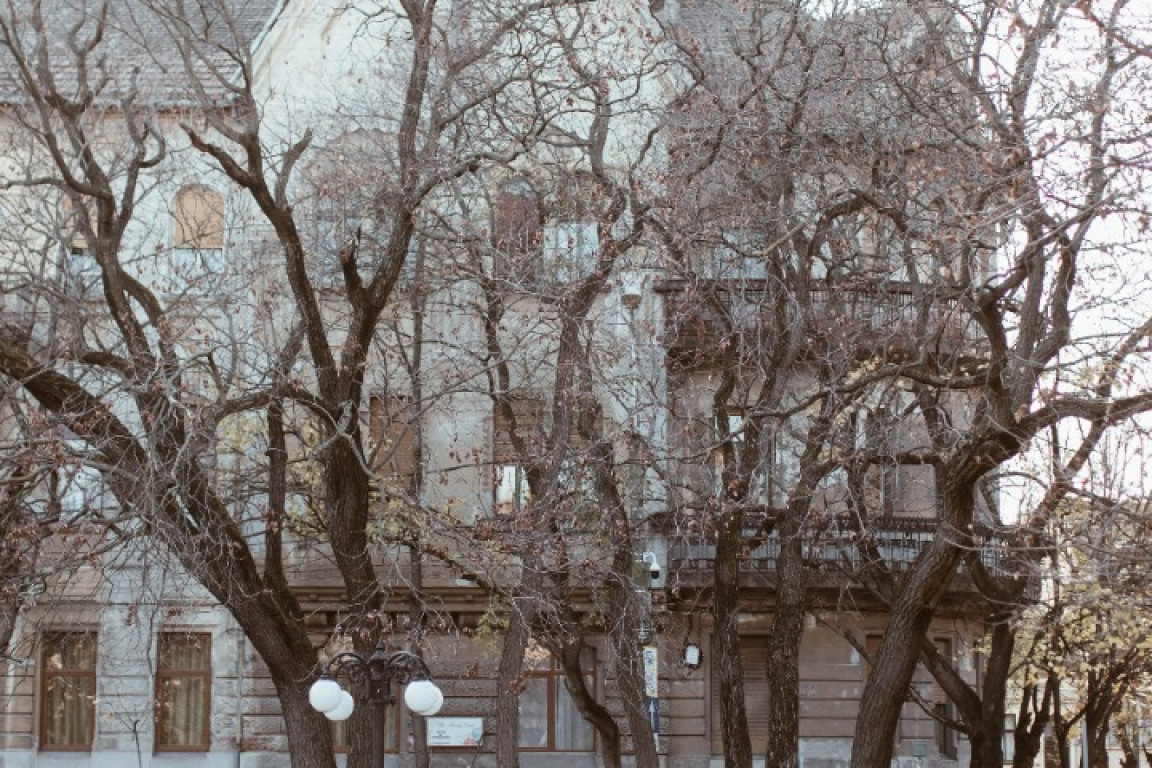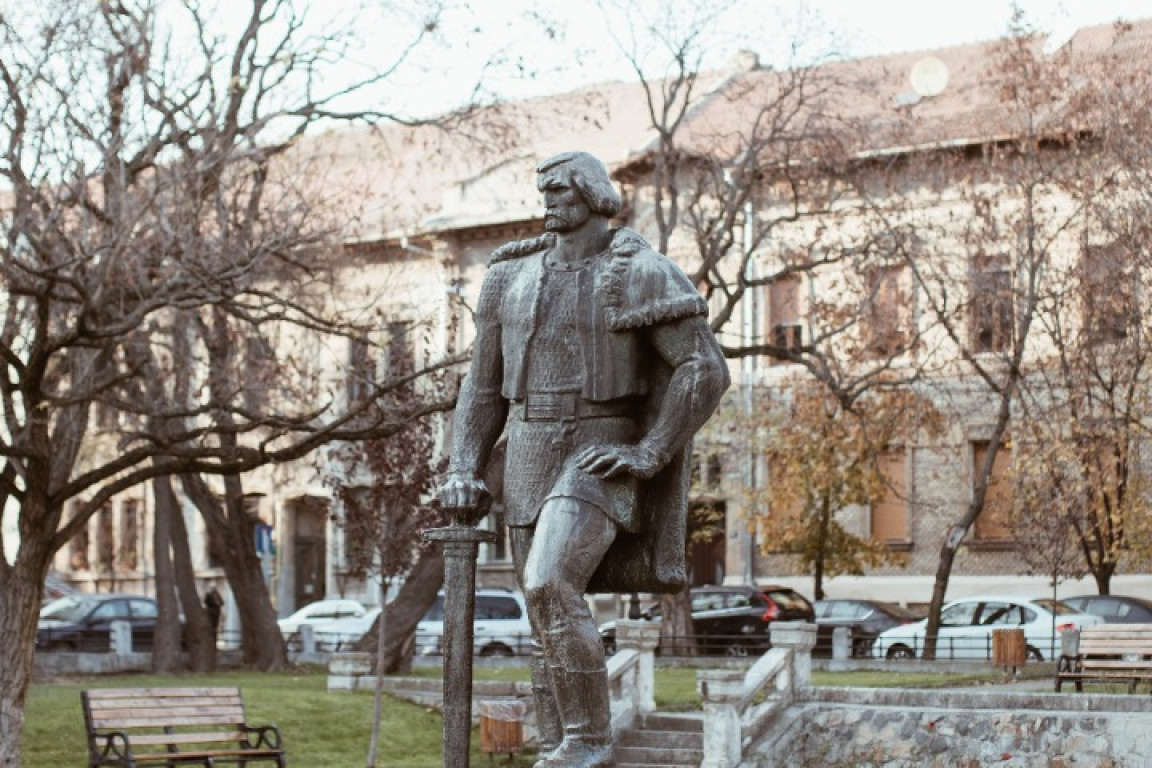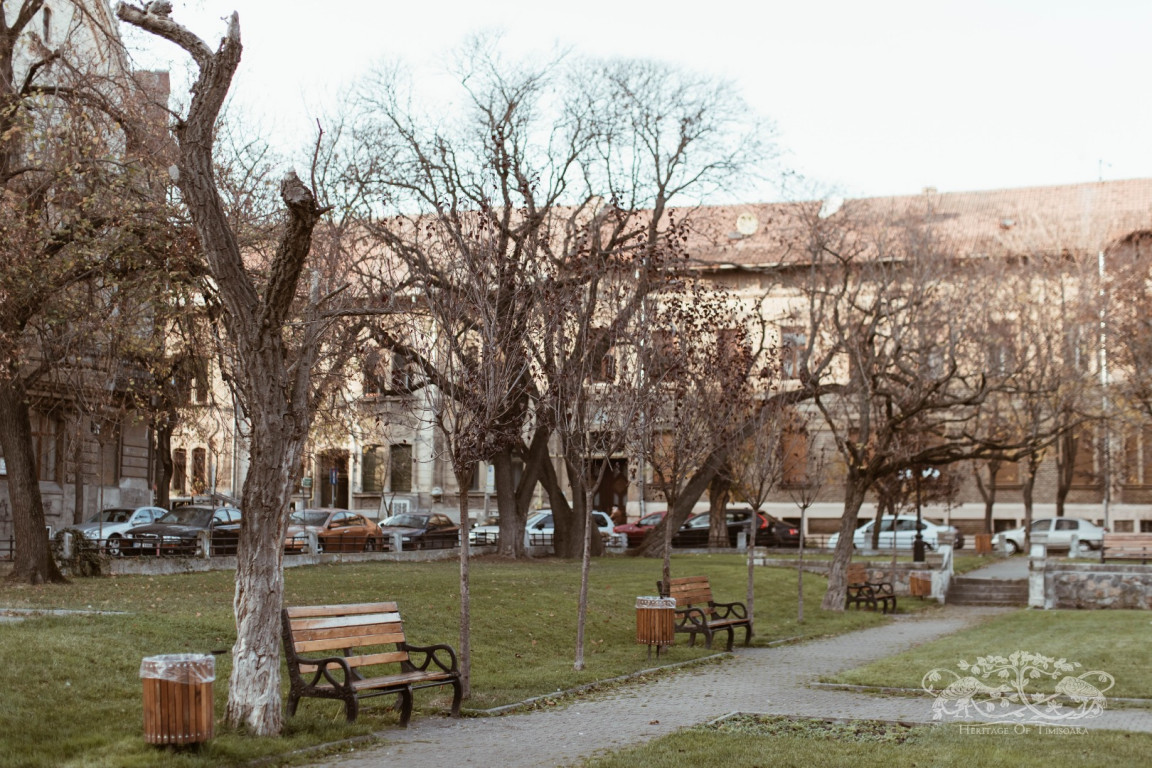This spot has gone through a spectacular transformation, from a non aedificandi place (esplanade), part of a landscape with bayous, to an area surrounded by embankments in preparation for draining, to a cattle market, to the “garden” of the most valuable architectural ensemble in the new neighborhood of Elisabetin, starting with 1904.
Despite its position in Elisabetin, Plevnei Square is part of an urban site inscribed in the List of Historical Monuments under the name “The Old Iosefin Neighborhood” (TM-II-s-B-06098). The design of the square was subordinated to the design of the surrounding buildings decorated in the 1900s style. A map of the area from 1913 shows the composition of the square to be classical and rectangular, in the style of French gardens often associated with aristocratic/bourgeois living ensembles, serving to emphasize their position in the social hierarchy. This area was designed to be strictly residential, with no commercial spaces (unlike near-by Iosefin), further reinforcing the idea that the square was meant to be a “private garden” for local residents. Dr Adolf Vértes, Romulus Nicolin, Ernő Neuhaus, Emil Szilard and Jakob Klein are only some of the people who built private houses or apartment buildings on the sides of the square.
The compositional relationship between the built and natural environment is harmonious. The small square is surrounded by low rise buildings consisting mostly of two levels. The only vertical dominant is the three-storey tower of the apartment building constructed by Dr. Adolf Vértes in 1909. Right next to it, on the west side of the square, there is the second three-storey building of the square.
The urban tissue is homogenous on three of the four sides that border the square, on the east, the west and the north, with a continuous front of buildings erected in 1900s style, while the southern side consist of houses erected in the middle of the plot, independent from each other, a possible expression and plastic manifestation of the geopolitical changes that occurred in 1919.
The original layout of the square has been kept to this day: a rectangular shape with a longitudinal ax on which the two artistic monuments are placed at a lower level than that of the surrounding streets. The statue of Gheorghe Doja (by A. Szobotka), introduced at the centre of the lawn in 1977, and the sculptural ensemble „Lesson About Cube” (by Linda Menczel) which replaced the water pool when the park was redone in 2005, mark the local artistic efforts of the last five decades. The main access is on the south-eastern corner (on Brașov Street), while the secondary accesses and the stairs leading to the lowest level of the square have been reconfigured.
In terms of perception, the shape of the square is emphasized, both from the inside and from the outside, by trees plantations whose age help us reconstruct the evolution of the square. The longest surviving layer of vegetation is the linden trees -- Tillis sp. – estimated to be planted 80-90 years ago, in the Interwar period. Second in terms of age are the black locust trees -- Robinia pseudoacacia – planted in the communist period, followed by the red wax cherries -- Prunus cerasifera (”Pissardii”) – planted after the fall of communism in an attempt to homogenize the city’s vegetation. It is worth remarking on the groups of Koelreuteria paniculata growing in the extremities of the square, which create a romantic atmosphere, suggesting wilderness and untouched nature. Among the elements eliminated from the original composition are the six poplars that used to flank the accesses into the square, a reminder of Timișoara’s dendrologic character as a marshy plain city, a detail now lost in the war against poplar “fluff”.
In terms of identity, the square has a strong association with the revolutionary hero Gheorghe Doja, as legend has it that his torture and killing took place in this part of the neighborhood. This led to the naming of the street, followed by the naming of the square, then by the introduction of the commemorative monument. Presently, the square also hosts temporary artistic interventions, such as “The Chair of Gheorghe Doja,” a collaborative project between Branislav Nikolic and Miki Velciov, Timișoara, 2019, a reference to the hero’s torture chair.
In time, the square has become from a no man’s land to a market, to a green space for beautifying a middle-class residential area, to an element that shapes the lives of today’s residents. “Ilie Stepan: This is the place where I have the most powerful memories of my entire existence, a place that I can recall in the smallest of details.” (Mircea Mihăieș in dialog with Ilie Stepan).
* The placement of vegetation into age categories has been done according to the Green Area Registry method developed by Dr Eng. Zeno Oarcea, a method with a medium level of accuracy.























